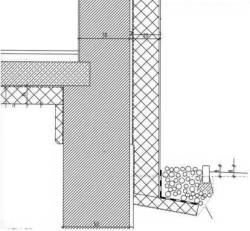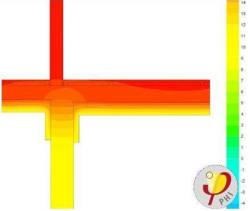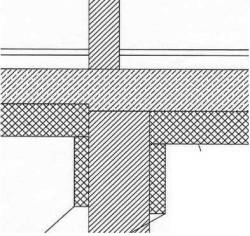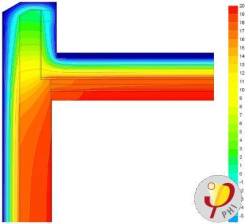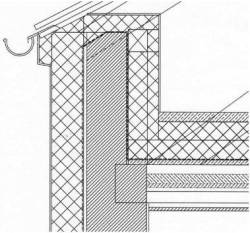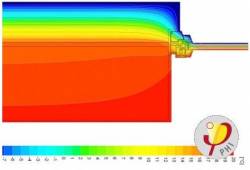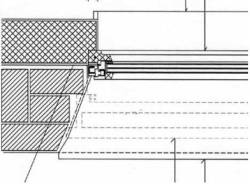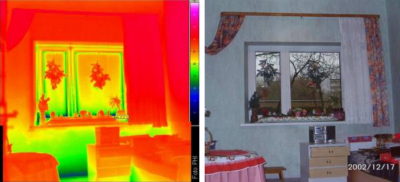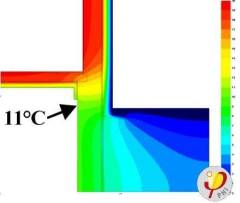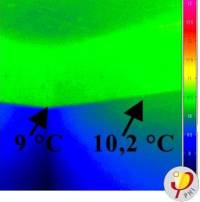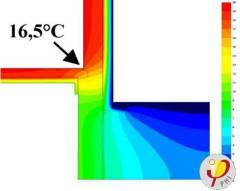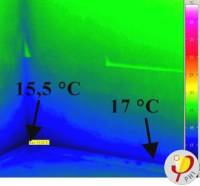This is an old revision of the document!
Quality Assurance - Thermal bridges
The parts of the building envelope in which higher transmission losses occur relative to the surface are referred to as thermal bridges. With moderate detail formation, these transmission losses are between 10 and 20%. In unfavourable cases they may even be 30%. The effects can be serious in terms of the low temperatures of the interior surfaces and the resulting problems with mould growth, and impairing the general level of comfort and health that the building can offer.
In the German energy regulations (EnEV), overall thermal bridge losses are calculated with an addition of ΔUWB = 0.1 W/(m²K) to the U-value; in compliance with the standard details given in the DIN 4108 (Supplementary Sheet 2) this is 0.5 W/(m²K). For refurbishments, however, these values can only be used for newly built. Almost invariably, unfavourable thermal bridge factors can be expected, particularly for existing connection details at the plinth and for connections of the inner wall to the unheated basement or to the floor slab. In these cases, where it is difficult to remove the cause of the thermal bridge, it is necessary to extend the heat flow path and thus improve the thermal bridge loss coefficient.
When planning an energy-efficient modernisation, it is strongly recommended that all thermal bridges be included, along with their lengths. The respective thermal bridge loss coefficients (Ψ or Psi-values) must either be calculated or else taken from thermal bridge atlases or other sources. For detailed calculations of thermal bridges typical in masonry multi-family houses built in the 1950s and 1960s, the resulting value for ΔUWB is between 0.02 and 0.03 W/(m²K), if great care is taken to reduce thermal bridges. In comparison, optimised new Passive House buildings have a ΔUWB value between 0.01 and negative 0.01 W/(m²K). In favourable cases, these specific values can be achieved for renovations in the area above the plinth if all connection details are redone.
Reference will be made to the respective thermal bridge aspects of each construction detail and solutions will be presented. In the following illustration, examples of detail points are presented for a building that was built in 1930.
Illustration 1: (source: left PHI, right Schulze Darup)

Quality assurance with respect to thermal bridge effects initially takes place by optimising the details based on the calculation of the thermal bridges. The purpose of construction planning is to meticulously examine the building for any possible thermal bridges effects. Studying a cross-section is not enough; three-dimensional problematic areas and point thermal bridges must also be checked. For the connection details, e.g. of windows, detailed examinations should be carried out regarding the profiles and window glass edge systems as well as the installation situation.
In the process of tendering, the characteristics of the building components in relation to the thermal bridge parameters should also be described and components should be checked before installation so as to see if they fit the description.
An inspection with infrared thermographic imaging, which makes the infrared radiation visible in a series of colours, can be carried out to assess the thermal building envelope. The following illustrations show infrared images of the same building after completion of the energy-efficient modernisation.
A particularly interesting aspect is the comparison of the thermographic imaging with the set values of the thermal bridge calculation. It is important that the respective boundary conditions that exist are also compared in the process. The set values of the thermal bridge calculation are compared with the measured values of the thermographic images using two examples for the building’s base.
Illustration 5 (source: PHI)


